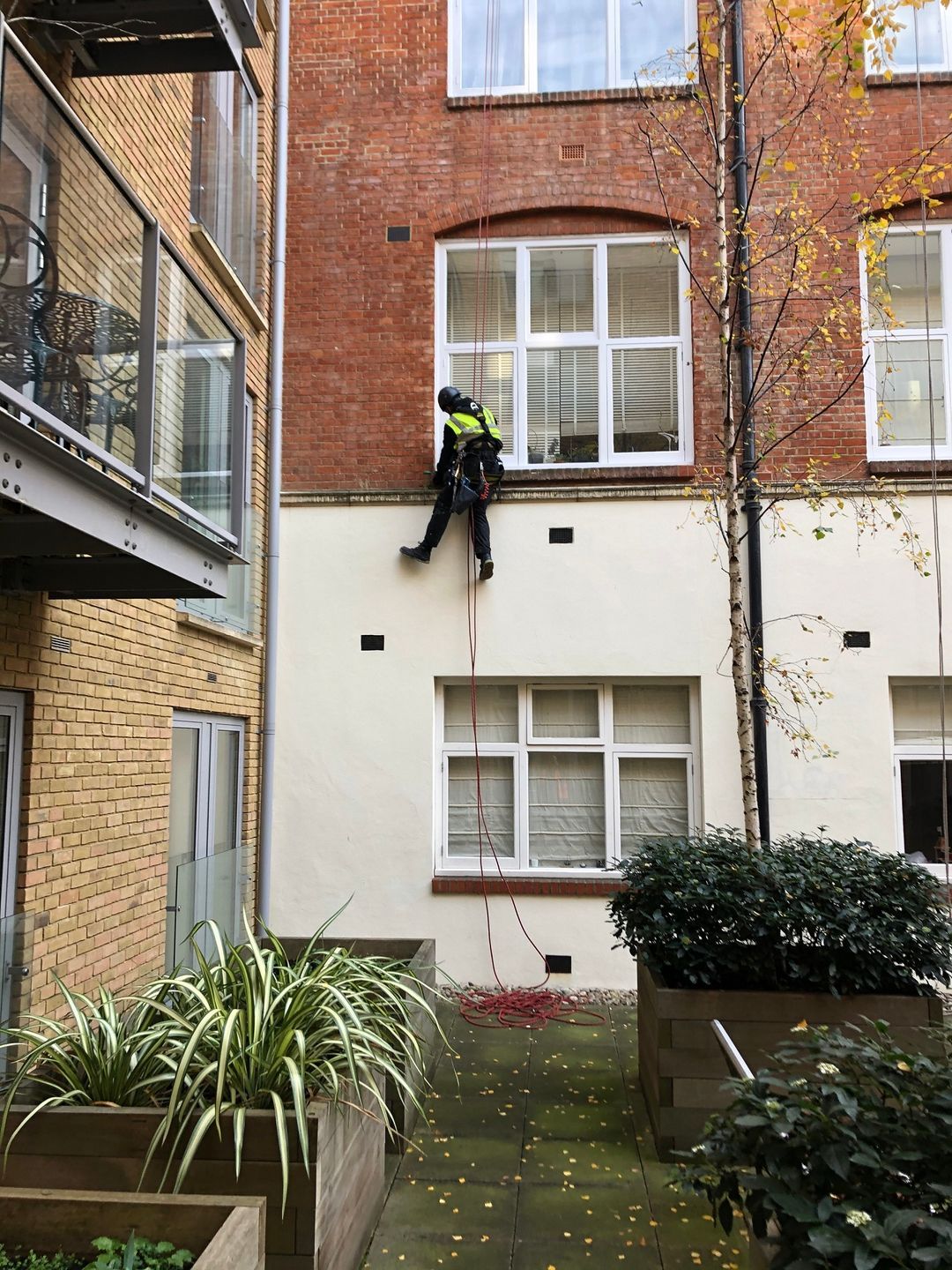The benefits of rope access in building repairs and maintenance.
Ash Irving-Wilkinson Block Contracts Manager of A S Ramsay explains more

If you have a repair or maintenance job that needs carrying out at height, your first thought is going to be ‘how are we going to get up there?’. Particularly if the job is on the top half of the building. But hold on, what if you approached it from another perspective – the roof.
Many people, even those in the property management industry, still believe that traditional methods of access – scaffolding, cranes and lifts are the only solution when it comes to working in hard-to-reach locations. However, there is a much more resource-efficient and cost-effective solution – rope access.
Saving the inconvenience of gaining local authority permission, possible highway closure, disturbing neighbouring residents and members of the public, not to mention the huge cost of the scaffolding itself, repairing and maintaining buildings via rope access is an obvious choice.
What are the benefits of rope access?
Obviously, rope access isn’t viable for all work at height but where it is a viable alternative, rope access offers a host of benefits to homeowners, property managers and residents
Versatility
Using ropes secured from the roof, builders can quickly and efficiently access almost anywhere on the building exterior – however large or small and whatever shape. Rope access can be used in a variety of situations such as redecoration, roofing repairs, masonry work and window restoration. For some larger works, scaffolding may be more practical for the majority of repairs and maintenance.
Safety first
Since only a specialist team can operate a rope access system, this method improves site safety. The builders have been trained to a very high standard to ensure optimal safety at all times, providing peace of mind not only that your building is in safe hands but so too are the workers. Rope access operatives are tradespeople with specialist skills. They have received training and are subject to stringent safety regulations.
And if your surveyor has a head for heights, inspection isn’t a problem. They can be lowered alongside the site manager to get a closer look at the work. Alternatively, some specialist contractors such as A.S. Ramsay also have stringent reporting methods to counteract the fact that a surveyor can’t access the space.
Cost-effective
As you aren’t going to be hiring extra equipment, you are immediately cost-saving. Additionally, with no scaffolding at ground level work can be taking place that otherwise would have been impeded. Using rope access can save up to 50% of your budget. And since no heavy access equipment is required, the cost of using and transporting it is also eliminated.
Greater flexibility
Rope access allows people to get to places that traditional access methods wouldn’t be able to. Ropes can be lowered from the top of a building to allow access to confined or awkward spaces, especially where there might not be solid ground available to rest a scaffold or position a crane. In addition, work doesn’t need to be planned months ahead to coordinate arranging access and contracting necessary tradesman.
Limited disruption
Scaffolding takes ground space which would mean blocking pavements, restricting access or impeding the work of other groups. It’s also a less obtrusive solution than using up-and-over scaffolding that bears down on the property’s existing roof. Since rope access is from above, it doesn’t require bulky equipment and can be carried out almost invisibly.
Where can rope access be used?
Rope access methods are ideal for a wealth of different projects, including for sash window repairs and decoration, minor roof repairs, repairs to masonry and external decoration projects, pest control and installation of pest deterrents, and cleaning and repairing of rainwater pipes.
Rope access is particularly beneficial for rear elevations where up-and-over scaffolds are the only option since they allow for cheaper and more flexible solutions when working on this area of a property. Rope access is also beneficial when it comes to gutter cleaning and maintenance, something which is extremely important for any property.
What are the risks of up-and-over scaffolding?
Although up-and-over scaffolding is a traditional access method, it presents several risks that property managers should be aware of. As well as being extremely costly, it can cause more damage to the property’s existing roof, not to mention cause concern over the bearing capacity of the roof in question. There are also risks associated with dropping scaffolding equipment down from the roof. Rope access systems eliminate these risks.
Talk to the professionals.
We can supply high-quality rope access systems that can make it more cost-effective and simpler to access even the hard-to-reach areas of the property that you manage. Thanks to the expertise of our team, and the competitive pricing that we offer, we’re your number one choice for rope access solutions. Contact us today to talk to our experienced team – we’re looking forward to helping you.
For more information about A S Ramsay please click here.
© 2026 News On The Block. All rights reserved.
News on the Block is a trading name of Premier Property Media Ltd.
